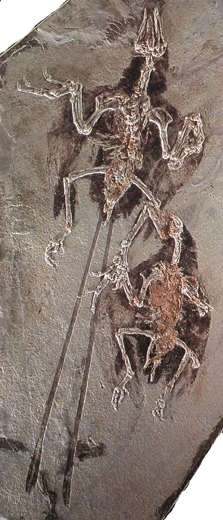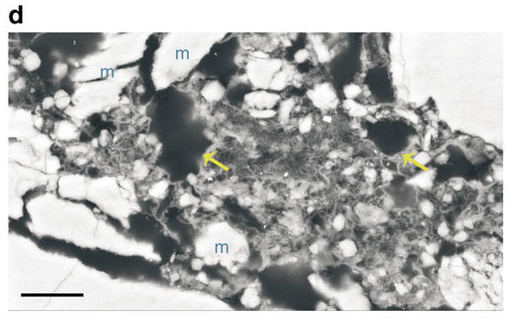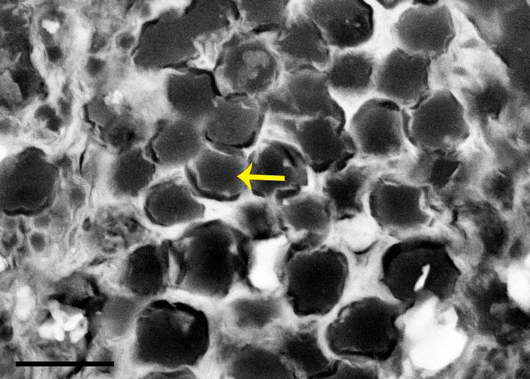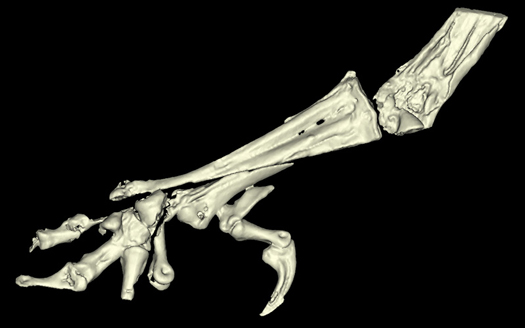“Standing Dinosaur Crouching Bird”
Detailed Molecular Analysis of Fossilised Tissue Reveals Gradual Evolution of Avian Stance
It may be seventeen years since the release of the multi-award winning film “Crouching Tiger, Hidden Dragon”, but today, we draw similarities between one of director’s Ang Lee’s most successful movies and a new scientific paper published in the on line journal “Nature Communications” that illuminates how the crouched posture of modern birds evolved from their more straight-limbed dinosaur ancestors. It’s really a case of “standing dinosaur evolves into crouching bird”. The fossils associated with the study represent Confuciusornis sanctus.
Just like the film released in 2000AD, the research is the culmination of extensive collaboration between China and the West. A joint study between scientists from the Royal Veterinary College, led by Professor John Hutchinson and Professor Baoyu Jiang (Nanjing University, China) and associates have analysed the perfectly preserved soft tissues around the ankle joint of a 125-million-year-old, early bird called Confuciusornis and used this data to work out the evolutionary path the birds took towards their more crouched posture.
An Model of the Early Cretaceous Bird Confuciusornis (C. sanctus)
Picture credit: Everything Dinosaur
To view models and replicas of Confuciusornis and other prehistoric animals: PNSO Age of Dinosaurs Replicas.
The Early Cretaceous Bird – Confuciusornis
Known from hundreds of beautifully preserved specimens excavated from Lower Cretaceous strata associated with the Yixian and Jiufotang Formations of Liaoning Province (north-eastern China), Confuciusornis was a pigeon-sized bird that shows a number of anatomical adaptations over more primitive creatures such as Archaeopteryx. For example, Confuciusornis had a toothless beak, compressed caudal vertebrae (pygostyle) and a deeper chest to support more powerful flight muscles. The males possessed a pair of extremely long tail feathers (see illustration above), whilst the females tended to be smaller and lacked long tail feathers.
A Pair of Confuciusornis Fossils (Male and Female)
Examining the Lower Leg
The researchers examined the lower leg of one specimen which had soft tissues preserved, including the remnants of cartilage and ligaments, around the ankle joint. These fossils have been preserved in layers of very finely-grained volcanic ash, enabling exquisite details from animals that lived more than 120 million years ago to be studied.
Dr Jiang stated:
“These soft tissues were not just preserved as an ashen replacement of the former tissue, as sometimes happens. Rather, the cellular and fibrous structure of the tissues was preserved at a microscopic level.”
Multiple spectroscopic imaging methods in conjunction with X-ray synchrotron analysis enabled the team to examine these tissues at the molecular level. Some of the bird’s original organic chemistry was identified. In particular, the team found evidence of fragments of the collagen proteins that made up the leg ligaments, which matched the preservation at the microscopic tissue level of detail.
Tissue Preservation in a Confuciusornis Specimen
The team’s findings concur with an increasing body of evidence that, under certain special conditions, some biological molecules including even amino acids or partial proteins, can persist over millions of years in the fossil record.
To read an article about the discovery of dinosaur proteins in 175-million-year-old Sauropodomorpha: More Dinosaur Proteins Found – Lufengosaurus.
Highly Magnified Image (Micrograph) Showing Organic Structures at the Cellular Level (C. sanctus)
Picture credit: Nature Communications
The image above shows a cross-sectional slice of the ankle area with a large area of mineralisation (m) visible in the fibrocartilage within the ankle joint. The yellow arrows equate to cells, scale bar 10 μm (microns).
Scanning Electron Micrograph of the Fossil Tissue
Picture credit: Royal Veterinary College
The image above shows a cross-sectional slice of tendon or ligament fibres (arrow) from a scanning electron micrograph of the fossil tissue (scale not stated).
An Exceptional Fossil
Professor Roy Wogelius (University of Manchester), one of the co-authors of the scientific paper, commented:
“The preservation in this fossil was exceptional and allowed us to resolve subtle but important chemical and structural details within this critical early species of bird.”
The researchers then reconsidered this evidence in light of the whole anatomy of the Confuciusornis leg, and that of its cousins from earlier dinosaurs to extinct and even modern birds. Using this data, the team were able to obtain more information that potentially maps out how the straight-limbed ancestors of birds (theropod dinosaurs), evolved the crouching gait.
Professor Hutchinson stated:
“Once we were confident that some of the remnants of the soft tissues around the ankle joint still remained around the ankle, we could reconstruct parts of the ankle beyond just the bones. The new information we gained about the anatomy of the cartilages and tendons show that this early bird had an ankle whose form fits an intermediate function between that of early dinosaurs and modern birds.”
Professor Hutchinson added:
“Overall this reinforced other lines of evidence that the more crouched, zigzag limb posture of birds evolved gradually from early dinosaurs to birds, with even these early birds having limbs that were built and worked differently from those of living birds, but were approaching the modern condition.”
Three-Dimensional Computer Image of the Fossilised Right Lower Leg (C. sanctus)
Picture credit: Royal Veterinary College
An Insight into the Evolution of Modern Birds
This multi-technique study involving scientists from both Chinese and British academic institutions, has provided a new insight into the evolution of modern birds.
The team have essentially plotted the evolution of the ankles of modern birds from their reptilian ancestors. By comparing the confuciusornithid material with that of later Enantiornithines and those primitive birds believed to be more closely related to modern Aves (Neornithes), such as the Ornithurae, the researchers have shown that as the number of main toes was reduced, the foot narrowed and became more robust.
The hypotarsus process became more prominent and enlarged and the orientation of the foot altered towards a more crouching gait. This led on to the development of fibrocartilages, mineralisations and ultimately bony ridges and grooves to enhance the leverage of as well as enclose and guide the foot tendons which are seen in most modern birds today.
Everything Dinosaur acknowledges the assistance of a media release from the Royal Veterinary College in the compilation of this article.
Visit Everything Dinosaur’s award-winning website: Everything Dinosaur.






